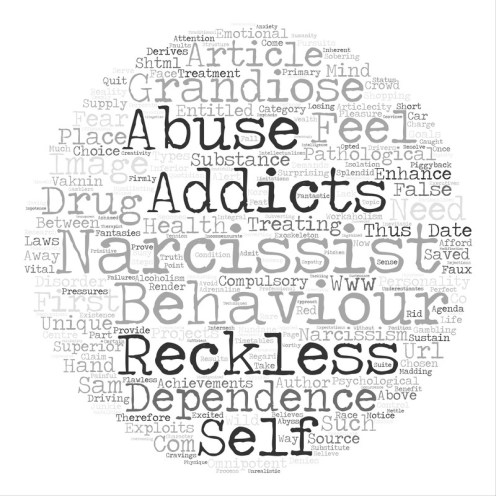
My last but one blog post on safeguarding was critiqued on the Thinking Anglicans web-site. This was on the grounds that my idea of a survivor in a safeguarding context did not include those falsely accused of sexual crimes. I have no doubt that to be falsely accused of a crime of this kind, that of betraying trust, would be a terrible thing. There is, however, one main reason why those falsely accused do not get discussed or supported in these blog discussions on safeguarding. These individuals are, for the most part, completely invisible. Whereas there are some among the survivor population who are ready to ‘come out’ and face scrutiny by the media, it is hard to imagine that anyone accused of a crime, even unjustly, would want to be questioned about the circumstances. Whatever else may have happened to allow a false accusation take place, something unwise in a person’s actions may have occurred. Youth leaders and clergy will now routinely behave in a manner that includes common-sense measures for self-protection. These might involve leaving doors ajar when speaking alone with a vulnerable person. The risks of a false accusation against a Christian leader in ministry are always a potential hazard to be faced.
I can think of only two individuals that I know, at a distance, who have been through the Clergy Disciplinary Process (CDM) for sexual abuse against a young person. In each case they were eventually vindicated. That should have been the end of the matter, but the toll exacted on them and their families was in each case dire. Serious life-changing illnesses befell the families concerned. In the first case it was the accused person who suffered an illness and in the second case it was the wife who fell ill. No one is ever able to say that there is a definite link between overwhelming stress and illness, but the anecdotal evidence often seems to point this way. The toll of months being suspended while waiting for a judgement must be appalling. Yes, I agree with the comment on Thinking Anglicans. The falsely accused are victims in the safeguarding and CDM processes but it is hard to show sympathy to them if we seldom know who they are.
The fate of those who are sexually abused and those falsely accused of such a crime can be compared. I would however maintain that those in the second group do normally have a good chance of a full recovery. The life-long damage borne by the sexually abused is, on the other hand, usually grievous. I am not going to list the possible symptoms of one who has been through such an experience, as my knowledge of this specialised area of psychology is, to say the least of it, incomplete. I have a little experience of engaging with those on the way out of cults or harmful religious groups who are afflicted with serious Post Traumatic Stress. To say that sexual abuse will often ruin a life is probably an understatement. It will often seriously damage both education and emotional development. Every child that is born has its own potential as they seek to discover their unique capacity for creativity and skills in some area. An emotional stability born out of early healthy relationships will allow the young adult to become eventually attached to a partner. The social/religious contract we call marriage spells out the expectation that a couple will remain together for their entire span of their lives.
Sexual abuse or the distortions of cult experiences will frequently play havoc with a child and young person’s educational and emotional potential. Normal concentration may be affected especially if, as a result of abuse, addictive patterns of behaviour sometimes emerge. Alcoholism or drug abuse does not fit well when studying for exams. Neither are good lasting relationships easily built up in such a setting. And yet self-medication with drugs, sex or alcohol is all too easy to understand when these substances are being used as a way of trying to escape the trauma of sexual abuse. The remembered pain must be blotted out in some way.
The survivor of a false accusation may have many issues to overcome but, if they are adult, there will normally be family and friends to help them endure the ordeal. The passage from adolescence to adulthood will have been crossed and that will have brought with it a certainly emotional stability with which to face the challenge of the false accusation. The suffering will still, nevertheless, be terrible as the accused risks losing something that is precious to all of us – reputation. Here the dead are threatened equally with the living unless, as in the case of George Bell, there are individuals concerned to protect a reputation even beyond the grave. A person’s reputation is not only of concern to them; the shame of a false accusation is something that potentially infects everyone around them as well as their descendants.
The issue of financial compensation for those who have been abused by servants of the church is an uncomfortable topic to raise. The sums that have been mentioned in the public domain as being paid to survivors are not so large that they would naturally tempt false claims. The process that has to be gone through before such claims are settled seems fairly intimidating. In the face of such barriers, can we really see many false claims getting past the process? Standing up for yourself against an institution as powerful as the church, when making a false claim is, on the face of it, an unlikely scenario. Many of those who have genuine claims are said to drop out of the process. Those falsely accused do not seem to have recourse of any kind. They suffer in silence, facing their pain alone. Do they not deserve some of the help and support that we seek to be provided for survivors in the past and present?
I would like to see the Church of England eventually come out from the protection of its lawyers and insurers and begin to set aside serious sums of money for both victims as well as the falsely accused. Money can help to repair damaged lives. From the IICSA hearings we learned that even small sums of money were simply not available for the purpose of providing basic counselling, let alone compensation for abuses suffered. A few hundred from a Bishop’s discretionary fund is hardly an adequate response to what was revealed of wicked activities by individual perpetrators.
2018 has been an eventful year in the area of church safeguarding. If the same momentum is maintained in 2019, who knows what this will bring? We can hope for certain outcomes. One is that the flow of transparency and openness will continue but at the same time the Church’s response be a healthy one. The technique of hiding from public scrutiny uncomfortable realities about abuse will no longer work. The only realistic path for the Church is to work with the truth rather than trying to pretend it does not exist. Out of such openness we may hope to provide better healing both for the victims and those falsely accused of such crimes. A Church which promotes justice of this kind will also be a far healthier place.





